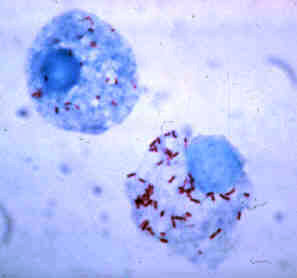Assistance
Rickettsial Infections: Ehrlichia, Anaplasma, and Rocky Mountain Spotted Fever


An Overview of Ehrlichia, Anaplasma, and Rocky Mountain Spotted Fever
Three Lyme disease coinfections, Ehrlichia, Anaplamsa, and Rickettsia, are similar types of bacteria that can cause tick-borne diseases in humans. What makes these bacteria different from more common coinfections like Bartonella and Babesia is that they have a greater chance of contributing to severe, life-threatening symptoms.
Ehrlichia, Anaplasma, and Rickettsia are most often acquired through tick bites. Some of these tick-borne diseases come from the same type of tick that transmits Lyme disease (the blacklegged tick), but other ticks are capable of carrying the infections as well. The CDC reports the transmission of Ehrlichia and the transmission of Anaplasma has been seen in blood transfusions and organ transplants in rare instances. Medical research has also documented some cases of transmission from mother to fetus. Additionally, fleas, mites, and lice have been known to carry Rickettsial infections.
The diseases resulting from Ehrlichia, Anaplasma, and Rickettsia are called ehrlichiosis, anaplasmosis, and rickettsioses. The primary species of Ehrlichia and Anaplasma that cause disease in humans are Ehrlichia chaffeensis and Anaplasma phagocytophilum. Both bacteria infect the body’s white blood cells. Ehrlichia and Anaplasma may accompany a Lyme disease infection, but they can also occur alone.
The most common Rickettsial disease is Rocky Mountain spotted fever (RMSF), caused by the bacteria Rickettsia rickettsii. It targets small blood vessels in the body, where it has the potential to be deadly. RMSF isn’t transmitted by the same tick that carries Lyme disease, but a person with Lyme could also acquire RMSF at some point and vice versa.
Symptoms of Ehrlichia, Anaplasma, and RMSF
Infections from Ehrlichia, Anaplasma, and Rickettsia bacteria have unique features, and they tend to progress rapidly through the body. The illnesses exist on a spectrum, meaning some people may experience a greater degree of symptoms than others. Generally, symptoms of Ehrlichia and Anaplamsa begin about 1-2 weeks following a tick bite. The rash associated with RMSF typically shows up in 2-4 days.
Ehrlichia, Anaplasma, and RMSF may be mild or severe. Of the three tick-borne diseases, RMSF has the highest chance of resulting in dangerous vascular complications. Note that all three illnesses should be treated with antibiotics promptly.
Hallmark symptoms of Ehrlichia, Anaplasma, and RMSF include:
- High fever
- Intense headache
- Chills
- Fatigue
- Muscle aches and pains
- Pink, red, or purple rash on wrists, forearms, ankles, the trunk of the body, and the soles of the feet (A rash is most likely to occur with RMSF, but a similar one can also develop with Ehrlichia.)
- Vasculitis (RMSF)
Other symptoms that can accompany the infections are:
- Flu-like illness
- Joint pain
- Disorientation
- Stomach aches
- Nausea and vomiting
- Weight loss
- Respiratory distress
- Low white blood cell count
- Anemia
- Increased liver enzymes
- Kidney failure
Those who are most prone to severe illness and require hospitalizations from Ehrlichia, Anaplama, and RMSF include the elderly, immunocompromised individuals, and people who have experienced a delay in treatment, states the CDC. More cases of spotted fevers are reported in men than women.
Testing and Diagnosis
The testing and diagnosis of tick-borne diseases such as Ehrlichia, Anaplasma, and RMSF can pose a challenge. The available testing for Ehrlichia, for example, is limited to two species of bacteria, but several species can infect humans. The presence of morulae, mulberry-shaped masses, can be seen on the blood smears of some patients. For cases of RMSF, concentrations of the Rickettsia bacteria in the blood can be low and yield negative test results despite being infected with the disease.
Testing can help confirm the presence of Ehrlichia, Anaplasma, or RMSF, but a “clinical suspicion” of these tick-borne infections is enough to initiate treatment, according to the CDC. If a person experiences the signs and symptoms of Ehrlichia, Anaplasma, or RMSF, they should consult with a healthcare provider immediately. The standard course of treatment is the antibiotic doxycycline.
For patients who need additional help to manage tick-borne diseases, we advise patients to work with a Lyme disease specialist who has advanced training and expertise in diagnosing and treating Lyme and coinfections.
To locate a Lyme disease specialist with knowledge of Ehrlichia, Anaplasma, or RMSF, consult the Provider Search through the International Lyme and Associated Diseases Society (ILADS).
The MSIDS model, a 16-point assessment to identify sources of infections, immune dysfunction, and inflammation, can also be used to identify symptoms related to Lyme and coinfections. After you’ve filled out the questionnaire, you can have the report emailed to you to print off and take with you when you visit your healthcare provider.

